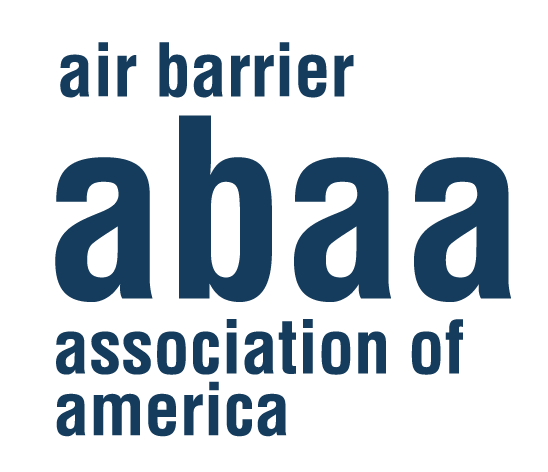Member Spotlight: Brad Brosmer
Brad Brosmer
The Air Barrier Association of America (ABAA) dives inside the career of Brad Brosmer, President of Superior Insealators in Huntington, IN. In this feature interview, learn what made him become an ABAA member, what led him on his career path, and get his perspective on the future of the air barrier industry.

Name: Brad Brosmer
Title: President
Firm: Superior Insealator
City: Huntington, IN
Brad Brosmer was born and raised in southern Indiana and received his Bachelor of Science in Electrical Engineering from Rose-Hulman Institute of Technology. After working in Engineering and Management within the manufacturing industry for more than 7 years, he shifted his career in 2009 for an opportunity to take over a small insulation company, now called Superior Insealators. Seeing the growth opportunities in the commercial sector, he focused on building Superior into one of the leading insulation, air and water barrier contractors in the Midwest with 3 locations throughout Indiana and Kentucky.
Brad has been a Level 3 Certified Air Barrier Installer for Spray Polyurethane Foam, Self-Adhered & Fluid-Applied Membranes since 2010. He is also a Certified Project Manager by SPFA. He was also a founding member of the BEC Indiana (Building Enclosure Council), which facilitates educational opportunities surrounding building envelopes that aim to improve the design, construction, and performance of buildings.
DO NOT USE - USED TO KEEP ACCORDION CLOSED INITIALLY
What was the path to your career — how and why did you pursue a profession as an air barrier contractor?
A: The majority of my early professional life revolved around Engineering and Process Management as my education and degree was in Engineering. I was mostly in Manufacturing industries, from Chemicals/Textiles to Electronics/Automotive and then finally to Building Products. I had also always been intrigued by Construction and pursued Real Estate on the side. Relationships within the Real Estate led to me an opportunity to take over a small insulation business. I saw a lot of opportunity with that business and the potential to grow into the commercial insulation and air barrier sectors, so I quit my job and took a leap of faith to pursue this business. Been focused on that vision ever since.
Is there anything that you believe everyone in this industry should be working towards?
A: Any time you are a part of a growing and developing industry, you have to be open to learning and improving. I think there is a tremendous amount of inconsistency and misconceptions within our industry right now. There are a lot of people out there just trying to get work, getting into this industry without truly understanding what they are doing. Just because you’ve done drywall or painted or installed insulation, doesn’t mean you have the knowledge to properly install air barrier systems. I believe the more GC’s, Architects, and Owners know about the importance of properly installed AVBs, the better our industry will be. Everyone in the industry should be trying to educate their prospective customers on the importance of getting installers that truly understand what good AVBs look like.
What role have peers, mentors, or advisors played in your career?
A: I was fortunate to meet a couple other like-minded Contractors within the industry early on just after we started doing AVB work. We have been able to help one another with questions, issues, and ideas in order to continuously improve our craft. Those relationships have been critical to our success.
What led you to become an ABAA member?
A: We became an ABAA member for a couple reasons. The main reason was because they were one of the only organizations at the time whose purpose was to improve the AVB industry. The other reason we joined was to differentiate ourselves within our market. We were one of the first Accredited ABAA Contractors in the areas we serve in the Midwest.
Are you involved in any ABAA committees? Do you have any ABAA certifications?
A: I am involved with the Contractors Committee and I am also a Level 3 Certified Air Barrier Installer for Spray Polyurethane Foam, Self Adhered & Fluid Applied Membranes.
How long have you been in the industry?
A: Our Company has been in the industry for over 25 years and I have been in the industry a little over 12 years.
What major changes have you seen?
A: We have seen a significant number of changes. There are a lot more products available than there initially was. Also, the number of Contractors that perform this type of work has increase exponentially. We are also starting to see more education around the importance of AVBs in the Architect communities.
What traits or skills do you think are necessary to be able to succeed in your industry?
A: In order to be successful long term in this industry, people have to be detail-oriented and technically capable. There are so many problems that result due to a lack of understanding of certain details or sequencing. These problems are detrimental to the long-term success of the industry.
Do you have any advice for anyone starting out in your field?
A: I would encourage anyone getting into the industry to do their homework before jumping in. Seek advice from other Contractors outside your area, suppliers, and manufacturers. For the betterment of the industry, don’t bid or secure work without truly knowing what you’re getting into.
How much demand do you think there is for people in your profession?
A: I would say there’s demand for individuals that truly understand the technical aspects of the industry. People that can help do design detail reviews, project planning, scope reviews, takeoffs, and other technical aspects have a lot of opportunity. On the applicator side, I think there are a lot of Contractors currently within the industry so to have opportunity as a Contractor, you have to be able to differentiate yourself by being an expert in the field.
What do you think the industry will look like in five or ten year’s time?
A: I think the industry is moving more toward factory applied AVBs and panelization. I think a significant portion of this industry will be handled inside a factory in the next 10 years.






